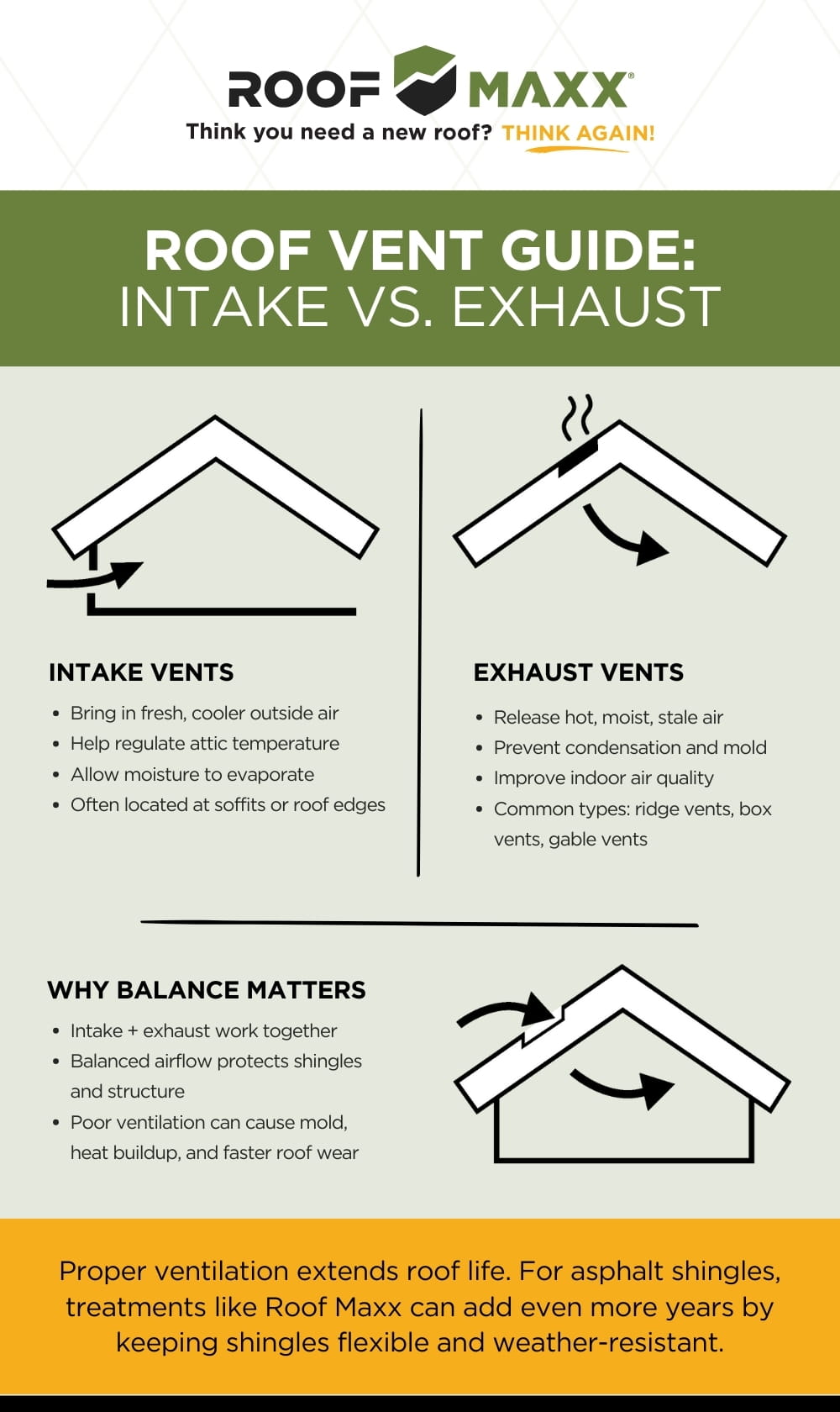Proper roof ventilation prevents mold, mildew, and shingle damage by balancing airflow in the attic. Intake vents bring in cooler outside air, while exhaust vents release warm, moist air. The right setup depends on your roof type and climate, with many homes needing both. Without ventilation, moisture builds up, shortening roof lifespan. Aim for one vent per 300 sq. ft. with a vapor barrier, or every 150 sq. ft. without, to protect your home.
As a property owner, you know how important it is to take the necessary steps to keep your roof in good condition. Roof ventilation allows air to flow freely in and out of your roof and attic, which prevents mold, mildew, and other unwanted problems that can develop when heat or moisture gets trapped.
And while most roofs require exhaust vents, some have the added need for intake vents. So what is the difference between these kinds of vents, and how many of each do you need for your roof?
The difference between roof intake vents and roof exhaust vents is all in the name:
Both kinds are important for different reasons. Without intake vents, exhaust vents may not function properly, and without exhaust vents, intake vents cannot remove the moist or hot air. Although technically not every home needs intake vents, the key is to maintain proper airflow throughout the attic. For this reason, a balanced system is usually the most effective.

The best roof ventilation depends on the roofing system you have and the climate in your area. In general, every home should have exhaust vents for air circulation and moisture control, but many homes also benefit from intake vents.
Your home may need both intake and exhaust vents if:
A roofing professional can help determine the right balance and placement of vents for your specific roof design.
Installing a roof vent usually costs between $300 and $650, which covers both labor and materials.
The total cost depends on:
Although this is an added expense, it can save money in the long run by preventing roof damage, shingle deterioration, and higher energy bills caused by poor attic airflow.
A poorly ventilated roof can quickly develop problems. Without proper airflow, moisture and condensation build up in the attic. Over time, this can cause:
These issues not only shorten the lifespan of your roof but also increase the risk of costly repairs.
Learn More: How to Remove Algae, Moss, & Mold From Your Roof
The number of vents you need depends on the attic’s square footage and whether a vapor barrier is present:
Homes with steeply pitched roofs (greater than 6:12) may need additional vents since the attic volume is larger.
Yes—at least when it comes to exhaust vents. Too many exhaust vents can disrupt airflow, making the system less effective and even leading to leaks or pressure problems in extreme weather. On the other hand, excessive intake vents are less of a concern since they will simply act as additional outlets if not needed.
Learn More: The 15 Best Types of Roof Vents to Consider for Your Home
Roof ventilation is one of the simplest ways to protect your home from moisture damage, improve energy efficiency, and make your roof last longer. Whether you rely on intake vents, exhaust vents, or both, proper airflow in your attic prevents problems that can lead to premature roof replacement.
But ventilation alone may not be enough to protect aging asphalt shingles. As shingles lose the oils that keep them flexible, they become brittle and more vulnerable to cracking and weather damage. This can happen even with good airflow.
Restoring your shingles to preserve their lifespan can help. Roof Maxx is a plant-based treatment that restores lost oils to asphalt shingles, helping them remain durable, flexible, and weather-resistant. Applied every five years, Roof Maxx can add up to 15 years of life to your roof at a fraction of the cost of replacement.
Keep your roof maintenance easy and breezy. Connect with your local Roof Maxx dealer to learn more and get a free estimate.
With our five-year, transferable warranty, you’ll enjoy the peace of mind that your roof and entire home are protected.